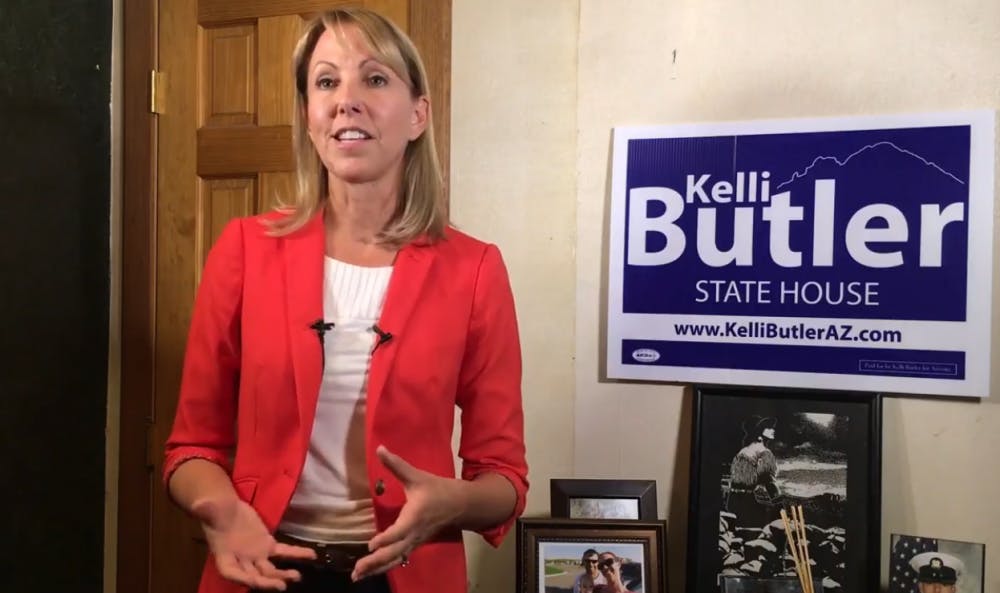In 2016, 35.6 percent of Arizona legislators were women and now following last year's election, that number has increased to 38.9 percent.
Out of the 50 U.S. states, Arizona has the third highest number of female legislators at 35, according to the National Conference of State Legislatures.
An ASU alumni and current New York University student James Macdonald, conducted his thesis on female Arizona state senators and their experiences in the legislature. Macdonald wrote “Arizona State Senate: First Hand Accounts of the Female Political Experience in Arizona” in 2015 to 2016, his final year at ASU. His thesis is currently under embargo and will not be shared with the public until next year.
The research questioned the large amount of Arizona women in politics compared to other U.S. states and analyzed why the state is different. Interning with the Arizona Senate for four years, Macdonald said he was pleasantly surprised by how many females occupied seats there.
Macdonald came up with a “Wild West Theory”, depicting historical analysis of why Arizona has seen women increasingly rise to power. This increase began as far back as the mid-1800s when Mormons and Socialists began to populate Arizona, according to Macdonald’s research. Eight years before the passage of the 19th Amendment of the U.S. Constitution, Arizona gave women the right to vote. This coincided with Prohibition and Arizona becoming a dry state in 1915.
“It was like the perfect storm that granted women the right to vote and gave them new roles,” Macdonald said.
During his internship at the Arizona Senate, Macdonald noticed that gender differences weren’t brought up.
“They don’t say, ‘I'm a woman, so this is why.’ They say, ‘I’m a legislator, so this is why,’” Macdonald said. “They are so progressive in the (Arizona) Legislature that it is not even an issue anymore."
Three weeks into her position as an Arizona State Representative, Rep. Kelli Butler (D-Paradise Valley) does not see a gender divide in the Arizona legislature.
“Every woman has a story about a day (they) felt marginalized and maybe it was gender related,” said Butler. “But I don’t see a pattern of that (with state legislatures). I think our colleagues are professional, they are used to having women on a committee.”
Butler is currently a member of the Healthcare and the Banking and Insurance committees where the Arizona House of Representatives discuss and vote on certain bills.
Despite having the third highest number of female legislators in the country, Butler and Macdonald agree that the representation of women is still not ideal. However, Arizona is progressing in comparison to other states like Wyoming, which has the smallest number of women legislators. There are only 10 women legislators in both House and Senate seats out of 90, according to the National Conference of State Legislatures.
The states with the most women legislators include Vermont (40 percent), Colorado (39 percent), Arizona (38.9 percent), Nevada (38.1 percent) and Illinois (36.7 percent).
"It takes a little more outside encouragement to get a woman to run," Butler said. "If it helps people visualize themselves to see other women already doing it, then that is a great thing.”
Shaandiin Parrish, an ASU student double-majoring in public policy and political science with a concentration in American Indian studies, understands the importance of women in politics. Also a page intern at the Arizona State Senate, Parrish recognizes the transition of power at the state legislature.
“Here at the Arizona State Senate, there are people that have an influence on the senators and the state. Three of those people are women: Senate Majority Leader Kimberly Yee (R-Phoenix), our Appropriations Chair is Senator Debbie Lesko (R-Peoria) and our Majority Whip is Senator Gail Griffin (R-Hereford).”
Parrish admires the female legislators and their commitment to the future of Arizona.
“Being a page and looking up to them transition from just committee chairs to actual leadership for our state," Parrish said. "That's huge."
Reach the reporter at lhgoldbe@asu.edu or follow @leahxgoldberg on Twitter.
Like The State Press on Facebook and follow @statepress on Twitter.




